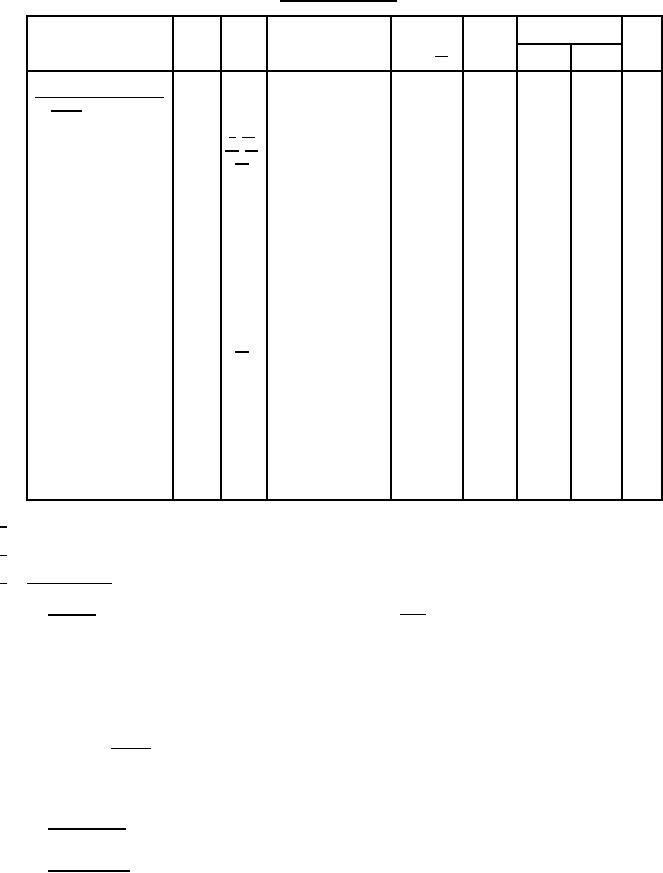
MIL-PRF-1/1203K
TABLE I. Testing and inspection - Continued.
Inspection
Method
Notes
Conditions
Acceptance
Symbol
Limits
Unit
Level 14/
Min
Max
Conformance inspection,
part 3 - Continued.
---
---
---
---
---
Intermittent life (2)
1501
9/ 10/ Stability-life test, or
11/ 12/ equivalent conditions,
13/ except TE = 250°C
(min); t = 1,000 hours
Intermittent life-test
---
end points:
Heater current
1301
---
---
mA
264
222
If
Noise figure (1)
---
---
dB
8.6
---
NF
---
Noise figure (2)
---
---
dB
10.5
---
NF
---
Power gain
---
---
dB
---
11.0
Gain
---
µA dc
Heater-cathode leakage
1336
---
20
---
Ihk
---
Insulation of electrodes
1211
---
---
50
R
---
Meg
µmhos
Transconductance (1)
1306
---
---
6,000
Sm
---
Hammer angle = 30°;
Shock
1041
13/
---
---
---
---
---
Ehk = 50 V dc;
Eb = 150 V dc;
Rp = 0
Shock-test end points
15
Ep
---
---
---
1031
mV ac
Low-frequency vibration
µA dc
20
Ihk
---
---
---
1336
Heater-cathode leakage
---
8.1
NF
---
---
---
Noise figure (1)
dB
11.5
---
---
Gain
---
---
Power gain
dB
At anode temperature below 150°C, Rg may be increased to 0.1 Meg.
1/
2/
Envelope temperature is defined as the temperature measured at the periphery of the anode.
3/
Noise figure test.
a. Definition. The noise figure of the system shall be defined as 10 log 32.4 , where 32.4 is the excess noise temperature of the
Y -1
noise generator, expressed as power ratio, and Y is the ratio of the noise power output of the system with the noise generator
"on" to the noise power output of the system with the noise generator "off". The specified test limits refer to the noise figure of
the tube under test (TUT) which is the noise figure of the system corrected for the noise figure of the noise amplifier and of the
first stage.
The first stage noise figure is calculated with the formula:
(F2 - 1) where F1 is the noise figure of the first stage, F2 is the noise figure of the noise figure amplifier, F1 -2 is
F1 = F1 -2 -
G1
the measured noise figure of the overall systems (all noise figures being expressed as power ratios rather than in decibels) and
G1 is the average gain of the TUT expressed as a power ratio.
b. Test procedure. Measurement of noise figure is made by noting the noise power in the calibrated power indicator both with the
noise generator switched "on" and with it switched "off", using the equipment shown on figure 2.
c. Noise generator. An Airborne Instrument Laboratory Argon Lamp Noise Generator, Model 70, or equivalent.
4
For Parts Inquires call Parts Hangar, Inc (727) 493-0744
© Copyright 2015 Integrated Publishing, Inc.
A Service Disabled Veteran Owned Small Business